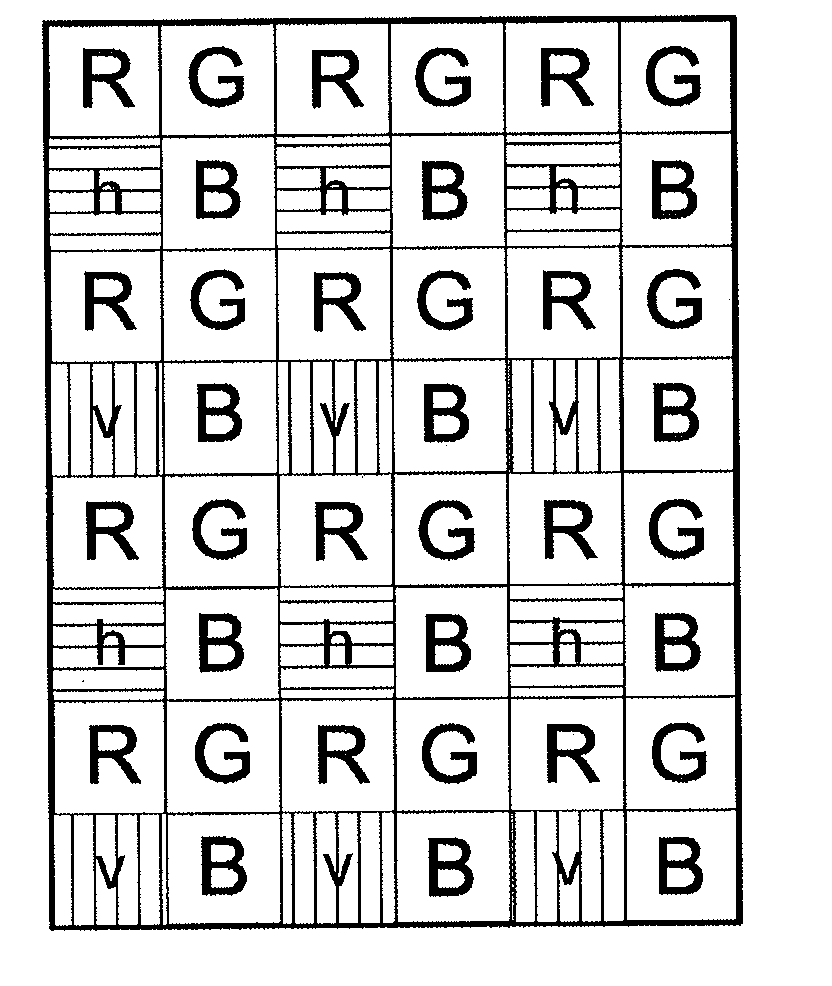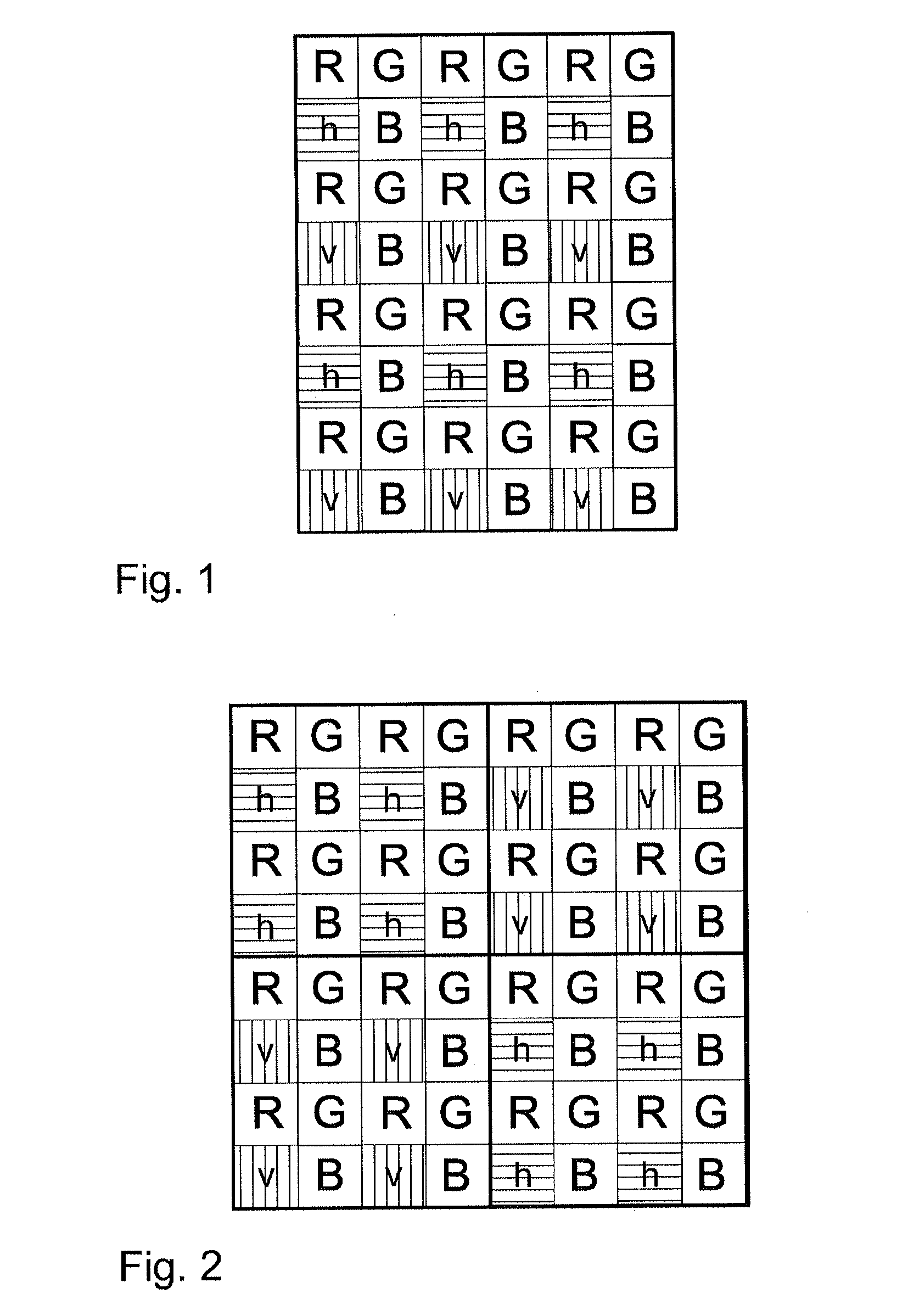Image capturing device for a vehicle
a technology for capturing devices and vehicles, applied in the field of vehicle image capture devices, can solve problems such as vehicle detection, and achieve the effect of reducing light intensity, reliable and cost-effectiv
- Summary
- Abstract
- Description
- Claims
- Application Information
AI Technical Summary
Benefits of technology
Problems solved by technology
Method used
Image
Examples
Embodiment Construction
[0020]FIG. 1 shows a filter pixel matrix for the image sensor, corresponding to a modified Bayer color filter where each fourth pixel is provided with a polarizer. In the shown case, the green filter element in the second line of an original 2×2 Bayer color filter (R,G,G,B) has been replaced with a polarizer (R,G,h / v,B). The two directions of polarization are at right angles or horizontal (h, horizontal hatching) on the one hand and in parallel or vertical (v, vertical hatching) on the other. In the filter matrix of FIG. 1, the second green Bayer filter element has been replaced in such a manner that the lines including polarizers alternate: 1st line: no polarizers, 2nd line: horizontal polarizers (h), 3rd line: no polarizers, 4th line: vertical polarizers (v).
[0021]The polarizers are arranged in such a manner that those in one line are at right angles to those in the next. In case of non-polarized light, there will be no visible line-patterned brightness or intensity structure. In ...
PUM
 Login to View More
Login to View More Abstract
Description
Claims
Application Information
 Login to View More
Login to View More - R&D
- Intellectual Property
- Life Sciences
- Materials
- Tech Scout
- Unparalleled Data Quality
- Higher Quality Content
- 60% Fewer Hallucinations
Browse by: Latest US Patents, China's latest patents, Technical Efficacy Thesaurus, Application Domain, Technology Topic, Popular Technical Reports.
© 2025 PatSnap. All rights reserved.Legal|Privacy policy|Modern Slavery Act Transparency Statement|Sitemap|About US| Contact US: help@patsnap.com


